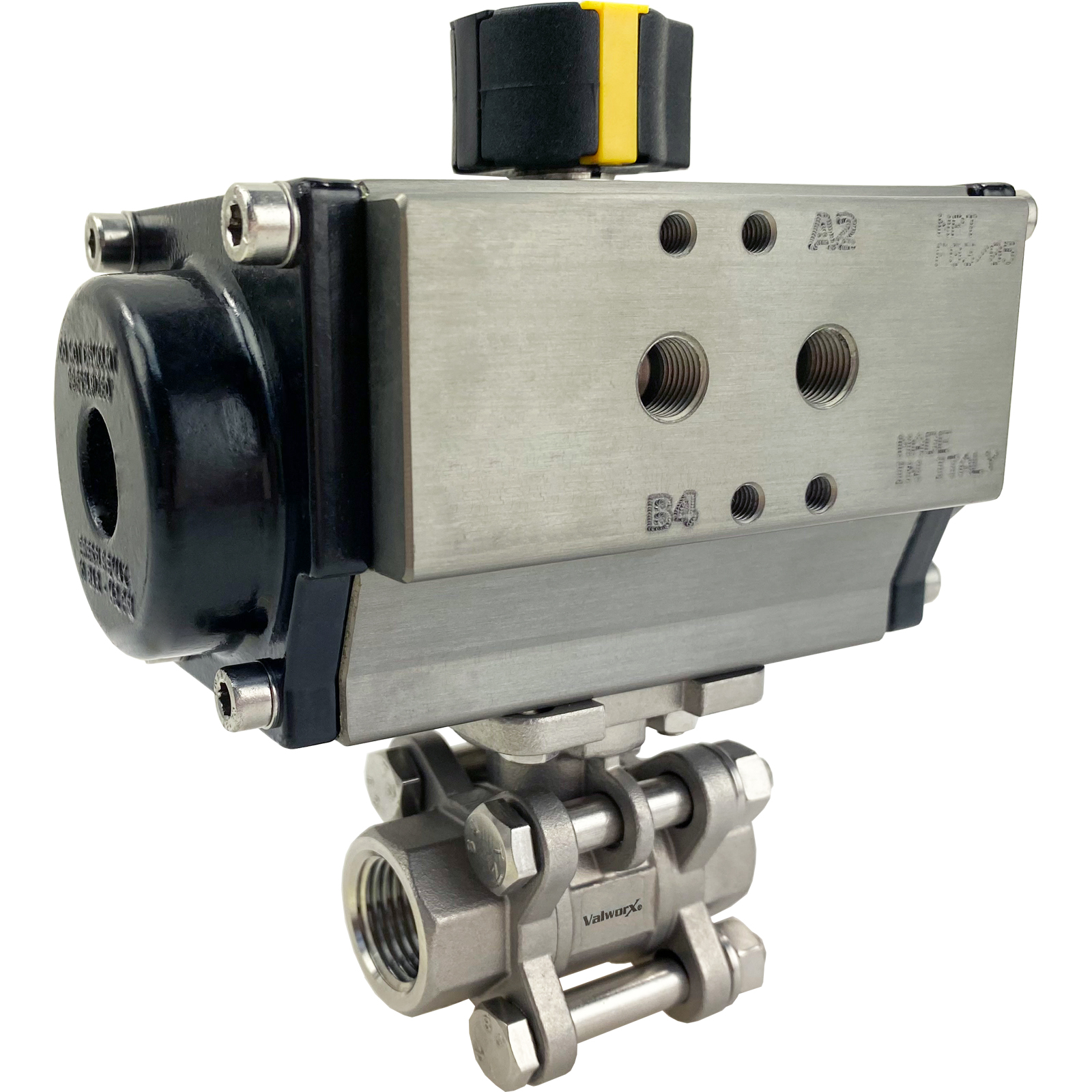In the intricate world of fluid control systems the seamless coordination between solenoid valves and actuated ball valves has a pivotal role. These components, which are often unnoticed heroes in a variety of industrial applications, work to form a dynamic team that allows precise and automated control of flow. Let’s look into the world of solenoid valves and ball valves with actuators, looking at their functions, applications and the symbiotic connection that drives fluid management.
Solenoid valves that are electronically operated gatekeepers for fluid flow, hold the key to a seamless control across a variety of applications. These valves add the precision and efficacy of fluid-control systems by controlling air-actuated ball and butterfly valves. Solenoids are valves that respond to electrical signals. They serve as orchestrators and dictate when the fluid path should be closed or opened.

Solenoid valves are compatible with both double-acting air and spring return actuators. They are able to adjust to different operational requirements and makes them an ideal option in a variety of industries. Integration is further simplified by the NAMUR mounting plate which is an international standard. This allows a direct connection to the air actuator. For more information, click Actuated Valve
Actuated Ball Valves for automated fluid positioning
Actuated ball valve, in contrast introduces automation into the physical movements of the valves. The valves are powered by electric or pneumatic actuators. They automatically rotate the valves until they reach the desired location, allowing an effortless fluid management. The synergy between solenoid valves as well as activated valves can create a system that combines electronic precision and mechanical precision.
When precision and reliability are of paramount importance the actuated ball valve shines. Its ability to regulate flow precisely makes it a great choice when it comes to tasks that require either switching off or modulating control. Ball valves with actuators are capable of controlling the flow of air, water and oil or any other media compatible with it.
Solenoid Symphony in Air Precision Actuated Ball Valve
The interaction between solenoid valves and air-actuated ball valves is akin to one of the orchestras, in which each component plays a vital role in the achievement of harmonious fluid control. Solenoid valves, which respond to electrical signals, work as conductors that orchestrate the closing and opening of the fluid pathway. Air-actuated ball valves, guided by electrical signals, execute the mechanical dance to regulate flow.
The orchestra is remarkable because of the way it is connected via the NAMUR mounting pads. This connection is standard and simplifies the assembly, but it also provides a safe and efficient linkage to the solenoid and the air actuator. It’s a seamless relationship that converts electrical impulses to physical movement. This allows for precision that is comparable to the requirements of industrial applications.
Navigating Modulation – The Dynamic World Of Ball Valve Control
Ball valves, whether operated or not, are well-known for their versatility in controlling fluids. Their ability to modulate flow of water, air and oil along with other similar media is what makes them a vital component in a wide range of industries. This capability can be further enhanced with actuated ball valves powered by solenoid valves.
Modulating control is essential in situations with different demands for fluid flow. Ball valves that are activated, guided by solenoid accuracy, are able to excel in these scenarios. If it’s about adjusting the rate of flow of water in a cooling unit or controlling the release of air within a pneumatic application the dynamic nature of ball valve control guarantees that the fluid will respond precisely to the demands of operation.
It is important to have a variety of ball vales to be able to ensure optimal performance and long-lasting. The industry demands solutions that can not only be able to meet the demands of their business, but will also endure in a wide range of operating conditions. The market has a vast variety of ball valves for sale, each of which sets a standard for quality and endurance.
There are numerous options available depending on whether you want a ball valve that’s smaller and manual operated, or one that is sophisticated and electrically activated. The selection process involves considering aspects like the type of fluid, operating pressure, temperature, and the specific requirements of the application. With this extensive selection industry can come up with fluid solutions tailored to the specific needs of their customers.
Final Conclusion: Precision Dance of Solenoid Valves and Actuated Ball Valves
In the complex fluid control industry, precision is paramount, and the partnership between solenoid valves and actuated valves shows this in a manner that is refined. The electrical control of solenoid valves seamlessly integrates with the mechanical capabilities of ball valves that are actuated, creating a ballet of precision that manages flow with incredible precision.
Each component in this symphony plays an important role. From the international standard NAMUR mount pads that ensure an unbreakable connection, to the automated motions of actuated ball valves as a result of solenoid signals. The dynamic duo of solenoid as well as activated valves are a key element in fluid management systems which are seeking the highest level of reliability, efficiency and flexibility.
